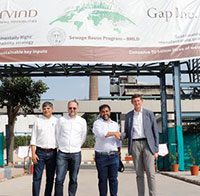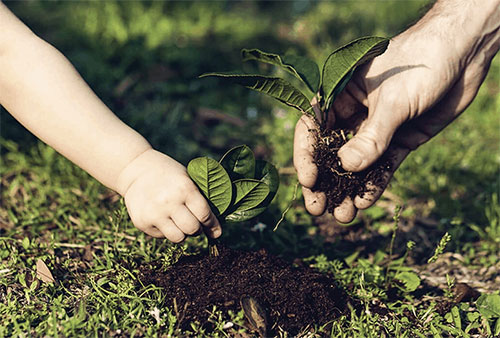FW
The EU-Vietnam free trade agreement is set to come into force this year. The trade agreement would eliminate virtually all tariffs on goods traded between the two sides.
However the agreement might pose a challenge to Bangladesh’s struggling readymade garment export business. It would eliminate the existing disadvantage of Vietnam in the EU market. Bangladesh might lose its competitiveness in the EU market by 12 to 15 per cent as Vietnam would get the same percentage of duty benefit in the market. The EU is the largest export destination for Bangladesh and the country enjoys generalised scheme of preferences in the economic bloc. Bangladesh’s readymade garment exports have been struggling for the last few months due to a global slowdown in demand and fall in prices. Although, Bangladesh is the second largest readymade garment exporter in the world, the country’s global market share has been reducing for the last few months while Vietnam has been grabbing a bigger share. Bangladesh’s share in the global clothing market decreased by 0.1 percentage point to 6.4 per cent in 2018, which was 6.5 per cent in 2017. While Vietnam narrowed the gap by 0.3 percentage points to 6.2 per cent in 2018 from 5.9 per cent in 2017.
Sportswear Pro will be held March 24 to 27, 2020 at the IFEMA, Feria de Madrid, Spain. The event is geared specifically toward business decision-makers in garment production looking to streamline manufacturing processes, reduce inventory and waste, and enable on-demand and just-in-time production in response to shortening fashion cycles. Many sportswear manufacturing innovations will be on display. Exhibitors will showcase their latest technologies in garment production, design and decoration. This covers all aspects of production from digital printing and cutting, to embroidery and heat sealing, along with software solutions for process automation and supply chain management. These diverse exhibitors promise valuable insights into new business opportunities and enhanced production processes. One of Sportswear Pro’s key goals is to show visitors where the crossover between print and sportswear is and how some of the trends affecting sportswear are the same ones that are impacting the wider print industry.
Visitors will be able to get an up-close look at the garment production chain from initial design to final product, while also being given the opportunity to print a personalised sportswear garment on site. Design is of the main areas of focus for Sportswear Pro, and a number of companies will present their design software solutions for garment manufacturing.
Mango plans to make garments a lot more sustainable in the next five years. The company is hoping to transform the way it produces clothes by increasing the use of recycled polyester in its garments by 50 per cent and only using 100 per cent organic cotton from controlled sources by 2025. The brand has already signed up for the Better Cotton Initiative to support cultivation of sustainable cotton worldwide, the brand is also hoping that by 2030, 100 per cent of its cellulose fibers will be from controlled sources.
Mango opened in 1984. Consumption of water, energy and chemicals has been reduced through the introduction of Jeanologia’s Ecowash technology and through the incorporation of the Better Cotton Initiative in garments, which encourages the use of sustainable cotton farming techniques, while additionally guaranteeing workers’ health and safety. Almost 38 per cent of Mango’s jeans collection has sustainable characteristics and this figure is expected to increase to over 50 per cent for the coming season. The Spanish fashion brand with digital transformation and data wants to deliver meaningful changes. Mango has a new logistics center in Spain. Approximately 600 people work six days a week at the highly automated facility, where around 400 operations are machine-driven, to process items for store deliveries.
The net profit of India’s biggest kidswear manufacturing exporter Kitex Garments rose by 196 percent during the third quarter of the current fiscal. Net profit increased to Rs 36.57 crore in the quarter ended December 2019 as against Rs 12.35 crore during the previous quarter ended December 2018.
Similarly, the company’s sale during the same period increased by 84.28 per cent to Rs 250.86 crore in the quarter ended December 2019 as against Rs 136.13 crore during the previous quarter ended December 2018.
So far, first 9 months of the current FY have proved good for the company; compared to the same period of previous FY, the company has noticed surge of 55 per cent in its net profit. During the same period, the total income grew by 41 per cent.
During the current quarter, in view of Ministry of Textile’s notification, the company has reversed total export incentives (MEIS) of Rs 10.31 crore for the period from March 7, 2019 to September 30, 2019 in the standalone financial results.
Further, the company has not accrued export incentives of Rs. 8.78 crore for the current quarter in the standalone financial results.
Diesel has signed up to Fashion Pact. Along with the Italian clothing label, some 60 other brands are a part of the pact some big names are: H&M, Prada, Tapestry, Ralph Lauren, Adidas and Nike. The pact aims at reducing the fashion and textile industry's negative impact on the planet. Its key areas of interest are stopping global warming, restoring biodiversity and protecting the oceans, and it has set out plans for members to achieve zero greenhouse gas emissions by the year 2050, as well as targets to restore biodiversity.
Diesel is implementing a responsible business strategy that is respectful of people and the environment. Diesel also commits to climate action, and to rising for environmental stewardship, by minimising greenhouse gas emissions, reducing its water footprint, and improving reuse and recycling rates across its operations. Diesel also commits to developing a sustainability culture within the company, honoring employees’ rights and their diversity, which allows it to thrive, treating all equally, nurturing employees to fulfill their potential, and promoting a safe work environment. The company commits to working toward the highest social and environmental standards throughout the supply chain, by enhancing the traceability of its products and promoting positive practices among its suppliers.
In recent years, local spinners have joined global club of artificial fiber users with larger volume, posting a sharp growth in imports of manmade or chemical fiber (MMF). The Bangladesh Textile Mills Association (BTMA) states, in last five years, import of MMFs such as polyester staple, viscose and Tencel has seen a 48 per cent rise to 156,784 tonne in 2019, which was 105,946 tonne in 2015.
Import of viscose has seen the highest rise among the MMFs. In 2019, Bangladesh imported 53,289 ton, up by 32.30 per cent, which was 40,278 tonne in the previous year. Import of tencel fiber saw a 17.67 per cent rise to 7,418 tonne in 2019, which was 6,304 tonne in the previous year. However, import of polyester staple fibre registered negative growth by 6 per cent to 96,077 tonne in 2019, compared to 102,219 tonne in the same period a year ago.
The number of textile mills using manmade fibre also increased. As per the data, some 70 mills imported viscose staple fibre, 15 mills tencel fibre and 55 mills polyester fibre last year.
Cotton Ranking 2020 states, though sustainable cotton accounts for 21 per cent of global production, only 95 per cent of it is sold as conventional cotton because of low demand from major brands. The fourth survey on the issue published by the World Wildlife Fund (WWF), Solidaridad and the Pesticide Action Network (PAN) UK – analysed the largest cotton users among retailers and apparel brands. They were measure on sustainable cotton objectives and policies as well as the share of sustainable cotton they use and the transparency in their supply chains.
Ikea scored 79 out of 100 points, up from 76.7 in 2017, and is the second best performing company overall, after Adidas, in leading the way toward cotton sustainability. In 2018, Ikea increased its sourcing of sustainable cotton to 95 per cent from 87.3 per cent in 2017. The remaining 5 per cent is sourced as “Towards Better Cotton” considered by Ikea to be sustainable.
The global retailer also leads in disclosing information about the traceability of its cotton, according to the study. In 2018, Ikea sourced 155,000 metric tonne of cotton. It also publishes country of origin for 95% of its cotton use.
The Bangladesh government has stated that garments made with cotton produced from the US should be provided with a duty-free access to the American market. The US already provides this facility through agreements with sub-Saharan African and Caribbean countries under an African Growth and Opportunity Act (AGOA) and Caribbean Initiative. On an average, the US charges 15.6 per cent import duty on Bangladeshi products, which tend to be largely garment.
The US is the single biggest export destination for Bangladeshi products. The country recorded earnings of $6.9 billion from exports to America in fiscal 2018-19. Bangladesh's apparel shipments to the US edged up in 2019 -- a heartening development given the inclement condition on the export front.
According to Export Promotion Bureau figures, Bangladesh apparel shipments declined by 6.21 per cent to $16.02 billion between July and December 2019. However, the country’s export revenues increased by 9.47 per cent to $5.69 billion.
"Finally in 2019, the global business community, politicians and consumers awakened to the importance of sustainability that is affecting everyone to a great or less degree. Driven by consumer’s demand for carbon neutrality, the textile industry is slowly adapting its manufacturing processes to fully reverse the damage done in the past."
 Finally in 2019, the global business community, politicians and consumers awakened to the importance of sustainability that is affecting everyone to a great or less degree. Driven by consumer’s demand for carbon neutrality, the textile industry is slowly adapting its manufacturing processes to fully reverse the damage done in the past.
Finally in 2019, the global business community, politicians and consumers awakened to the importance of sustainability that is affecting everyone to a great or less degree. Driven by consumer’s demand for carbon neutrality, the textile industry is slowly adapting its manufacturing processes to fully reverse the damage done in the past.
Numerous new technologies are emerging pushed by inscrutable marketers, there is a lot of green washing in the media. Industry leaders are investing billions into sustainable alternatives for example Gap and Arvind recently fulfilled their pledge to build a joint bioreactor project to save over 2.5 billion litres of water annually. This new water treatment facility will eliminate the use of freshwater at Arvind’s denim manufacturing facility in Ahmedabad. This marks a significant milestone in the ongoing efforts of both companies to reduce the amount of water used in the apparel production pipeline.
The apparel industry is one of the most intensive users of water in the world and, in India, 54 per cent of the population faces a high to extremely high water risk. Arvind’s denim manufacturing facility in Ahmedabad, the first mill in India to manufacture denim, will now operate entirely with reclaimed water using a membrane bioreactor technology, which will treat domestic water drawn from the surrounding community without chemicals in the process.
population faces a high to extremely high water risk. Arvind’s denim manufacturing facility in Ahmedabad, the first mill in India to manufacture denim, will now operate entirely with reclaimed water using a membrane bioreactor technology, which will treat domestic water drawn from the surrounding community without chemicals in the process.
Increase in availability of sustainable fibers
In the last one year, huge strides have been made in technical production and availability of sustainable fibres. Currently, approximately 31 manufacturers across the world manufacture wood pulp fibre with Lenzing being the leader in this field. Responsible sourcing and sustainability are the key elements of the company’s corporate strategy as these help preserve global forests and prevent deforestation
Arcelik, the parent company of 12 leading home appliance brands recently announced its commitment to make its micro-fibre filtering technologies available to competitors in the home appliance industry. The company has developed the world’s first washing machine with a built-in synthetic micro-fibre filtration system, which will be available for purchase in 2020. It flushes down over 1 million micro-fibres per wash cycle to end up in our oceans and are proven to be contaminating the food chain. It is ready to share the new cutting edge technology for the greater good.
Circularity to help preserve resources
Already a big business, circularity is likely to grow. A circular economy can help us save precious resources by changing the fundamental principles of product design and utilising recycled fabrics and fibres wherever possible.
To meet the growing demand, new recycling technologies are being developed. For instance, Poseidon Plastics has developed a unique monomer recycling technology that converts polyester waste to recycled raw materials (BHET) to produce RPET has signed an MOU contract with Dupont, and Teijin Films to assist and develop a pathway to constructing an initial 1,000 tonne per year with a further increase to 10,000 tonne per plant per year achievable.
However, we need to understand the recycling process first if we wish to correctly define it for end-users. The consumer needs clarification, and the manufacturer needs certification to ensure that the carbon footprint, and environmental impact of the recycled fabrics we choose, is less than the original version. Thus, the textile workbook has changed forever. Now, an active collaboration between brands and consumers can help the industry to take that huge step towards sustainability.
 The virus outbreak could augur well for the Indian subcontinent, especially India with orders being diverted and demand for Indian cotton, leather increasing in the international market.
The virus outbreak could augur well for the Indian subcontinent, especially India with orders being diverted and demand for Indian cotton, leather increasing in the international market.
The Coronavirus outbreak has caused huge concerns in the worldwide financial markets. Shares of Chinese brands declined 9 per cent, while Italian brands are expected to fall by 1.8 per cent in the first half of 2020. Several high-end Italian brands have shut their Chinese stores, stoking concerns about the industry losing significant amount of sales if the virus is not contained quickly. Carlo Capasa, Head of the Italian national fashion chamber CNMI, fears the virus outbreak could result in a loss of 1.8 per cent to the industry’s turnover during the first six months of the year. As a preventive measure Italian brand Ralph Lauren Corp shut about half its 110 stores in China, while Tiffany & Co, closed 70 of its 240 shops on government orders.
Adverse impact on Australian wool auctions
Coronavirus has also adversely affected Australian wool auctions. The Australian Wool Exchange (AWEX) Eastern Market Indicator (EMI) lost 28ac or 1.8 per cent last week to close at 1548ac clean/kg. The EMI in US dollars (USD) was pushed even lower by a substantially weaker Australian dollar (AUD). Once again, overseas manufacturers using USD to buy wool were recipients of a much cheaper buy price.
Turkey emerges most preferable and profitable market 
The virus outbreak has halted apparel production in several provinces across China as people are no longer able to leave their homes. This is pushing them to find alternative markets for manufacturing apparels. One emerging market is Turkey known to be one of the most preferable and profitable markets due to its impeccable quality and fast production at affordable prices. Most brands and chain stores are expected to switch their operations to Turkey soon.
Orders diverted from China to aid Bangladesh industry
The Indian subcontinent including countries like Bangladesh, India, Pakistan and Indonesia are likely to enjoy rapid growth momentum due to increased demand for raw materials. In particular, Bangladesh is likely to gain as immediate orders from China are likely to shift to the country. However, the country needs to quickly back up its alternative resources forecasting potential demand. Some upcoming exhibitions may also be shifted to Bangladesh in order to attract foreign visitors to the country. This may open future business opportunities for the country.
A boon for the Indian industry
On a positive note, the virus is proving to be a boon for Indian industry, as it would enable Indian exporters to target markets that were earlier dominated by Chinese exporters. If China is not able to pick up production in 30 days, its main clients in Vietnam, Cambodia, Thailand, South Korea and the European Union could turn to India for buying finished goods, clothing and fabrics. As the fourth annual state of fashion report by The Business of Fashion and McKinsey & Company, the Indian clothing market is expected to be worth $53.7 billion in 2020, making it the sixth-largest globally.
This surge would also make the Indian textile industry more buoyant. Cotton stocks in the country are expected rise to 16 per cent of the total global inventory this season. Last year, India exported 800,000-900,000 bales of cotton to China. During the first four months of the cotton year (October-January), 600,000-700,000 bales were shipped to China while an additional 300,000 bales are expected to be exported soon.
Currently, India exports $223 million of leather tanning and dyeing extracts to the global market. If China’s exports of these goods are affected, the Indian industry may fill this gap and look profitable. However, it will take some time for India to match its Chinese counter parts as Indian traders do not have the same type of self-discipline, mobility, scale and scope offered by China.












